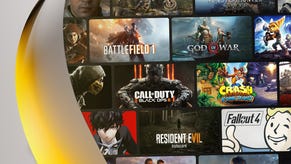The Great Divide
Silicon Sisters Interactive is making games for women and girls, but to do that properly means going back to basics
In pre-production we do, yeah. But I do want to speak to you point about teenage girls, because, as the mother of a teenage girl I have been so profoundly disappointed with the stereotypical information my daughter receives through gaming, and I really think those girls have been poorly served generally speaking. With a few exceptions: I think the Sims franchise deserves a shout-out. You asked about games that are doing it well, I think The Sims has profoundly connected with that audience, and interestingly enough it had a 40 per cent female team and it's led by a female.
I'd love to do a study on them and how that's impacted the whole industry, because you see people moving from there over to Zynga, over to Double Fine. I think there's some really interesting work coming from that original team, but that's a different story.
But just to say that, teenage girls, we really haven't found, in my opinion, products that strongly represent what they're into and what they want to play. We've done it, again, superficially - shopping games, modeling games, and all that kind of stuff - but what is that really strong connection? And I think playing with the concept of social engineering and social mastery has proven out quite well for us. It's something that teenage girls spend a lot of their time thinking about.
I have been so disappointed with the stereotypical information my daughter receives through gaming, and I really think those girls have been poorly served generally speaking
Brenda Bailey Gershkovitch
In our new product, I love the concept that our designers came up with for that one. In a traditional game you might see a player collecting gold to buy higher quality weaponry, whereas in our game you're using secrets to enhance relationships within a friendship group. It's a neat mechanic, and it's connecting well.
The really nice thing about School 26 is that it validates the things that girls spend their time doing. [Socialising] will stand them well around the boardroom table because those are the skills they're learning - how to use information in judicious and strategic ways. Parents don't think that their 14 year old girls who are obsessively talking and planning and engineering their social groups are developing valid skills. That was our big message to girls with School 26: this stuff is legitimate; pay attention to it, and do it well.
Well, the DNA of the studio is a research bible that we put together six months before we opened our doors, and the bibliography on that is probably 20 pages long. There are an enormous number of academic studies that cover tiny slices of female play in all kinds of different ways. We compiled all of that together and saw certain trends emerge.
And some of the trends are wrong. A lot of studies went on in the early Nineties that ended up concluding, girls need extra tutorials, girls need explicit congratulations and positive reinforcement, girls need a larger number of hints. And we were like, "No, silly, that's not girls, that's noobs."
We discarded a number of things from the early Nineties, but then in the late Nineties and the early part of last decade lots of universities said, "okay, if we get a group of girls together and ask them to design a game, what are the clear differences I get from when we ask a group of boys to design a game." We got some trends that were very useful to us from that.
Exactly right.
If you look at Carrie Heeter's study - it's called the Alien Study - one of the big findings there was that boys recreated games that they'd played. Essentially, everybody tried to build Halo, whereas the girls came up with innovative, unique gameplay because they didn't have all of these games running around in their heads already. She gave this pretty open concept; the only thing that they really were guided by is that the game had to include an alien.
And when you look at hardware, boys treat a console as a machine to be deconstructed and dominated, whereas girls see it as a tool to make their lives easier, and to solve problems for them.






.jpg?width=291&height=164&fit=crop&quality=80&format=jpg&auto=webp)

